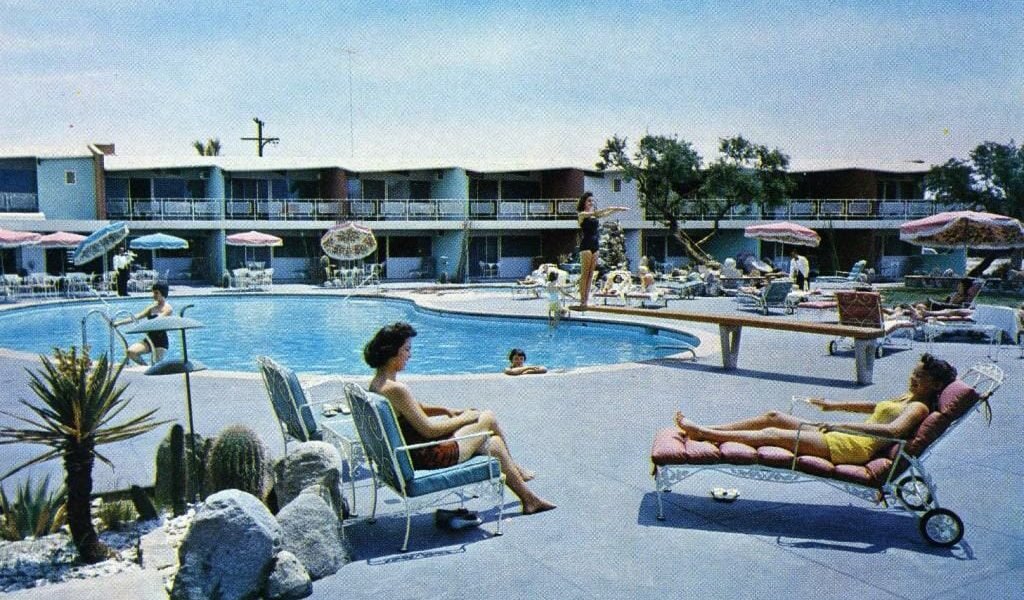
Travels through Time
With its youthful dislike of tradition and relentlessly forward-looking attitude, history in the United States is not as venerated as it is elsewhere. It’s a history that is dismissed and at times derided by more long-in-the-tooth global neighbors, with their ancient civilizations and centuries-old architecture. But we’re here to tell you not to put down your history book before you travel to the U.S. and that, in fact, its very youth is the thing that makes the history of the United States so fascinating. Seismic, country-shaping events, that elsewhere are resigned to the annals of books, are here alive, recent and in front of your very eyes.
To make our case we’ll take you on a journey through time, shining the spotlight on places you can visit tomorrow, while experiencing their place in the past:
1325 AD
Taos Pueblo is Built
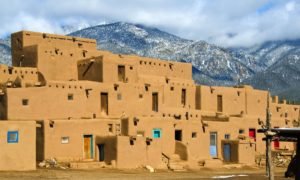
Taos Pueblo, a centuries old pueblo in New Mexico, is one of America’s oldest continuously inhabited communities. A fantastic place to learn about age-old Indigenous traditions, the adobe structures have survived since their beginnings in early as the 13th century. Taos Pueblo is not only a relic of the past– it’s a thriving community of Pueblo Indians with a rich cultural legacy that has been carefully preserved from their ancestors.
In a unique experience that takes a typical visit to the next level, All Roads North will pair you with a Taos Pueblo tribal member who will guide you in baking bread in a traditional horno oven.
1766
The First Enslaved Africans Arrive in Savannah
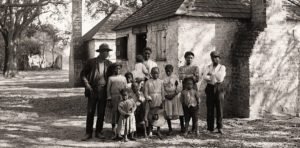
As the third point of entry for enslaved Africans during the Transatlantic Slave Trade, Savannah, Georgia had one of the highest populations of trafficked people from Africa. As such, the city is one of the best places to experience the history of African American communities from the country’s beginnings.
You can come face to face with the inhumane conditions slaves lived in at sprawling plantations just outside the city. You can visit Pin Point on the coast, a small but vibrant African American community founded after the abolishment of slavery post-Civil War. Just a few miles south of Savannah, Georgia, the Pin Point community developed its own distinct culture and language, known as Gullah Geechee. All Roads North will pair you with a master Gullah Geechee storyteller who will walk you through Savannah, sharing the stories of her ancestors.
1804
Lewis and Clark Depart on Their Expedition
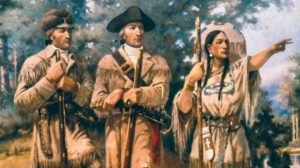
After the U.S. doubled its territory through the Louisiana Purchase, President Thomas Jefferson commissioned his private secretary Meriweather Lewis and army captain William Clark to head an exploration of the uncharted, new territory. Departing from St. Louis, the crew of 45 men made their way west through what is now Missouri, Iowa, Nebraska, and South Dakota. In North Dakota, a young Native American woman named Sacagawea and her husband joined the expedition. A full year after their departure, the team reached the Oregon coast. After hearing of Lewis and Clark’s successful journey, millions of Americans began migrating westward in search of new opportunities.
1848
The 49er’s Strike Gold in California
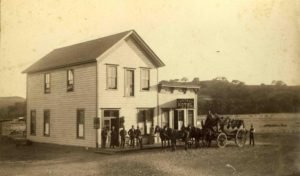
The Inn at Mattei’s Tavern is a luxury stay in Los Olivos with a wild California gold rush history. Originally constructed in 1886 by a Swiss immigrant named Felix Mattei as the primary stagecoach stop between San Francisco and Los Angeles, the property’s other past lives include a stint as a sneaky speakeasy location during the Prohibition.
Today, you can enjoy homages to an interesting past as well as the new luxurious touches, courtesy of a recent renovation by Auberge. It’s the perfect place from which to enjoy the area’s blossoming fine dining scene, go wine-tasting, and ride horseback through the mountains and valleys of Santa Ynez.
1857
The Age of the Cattle Barons
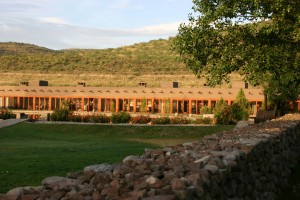
Cibolo Creek Ranch is one of the oldest ranches in Texas where historical artifacts, art and antiques combine to create an authentic 19th-century atmosphere. According to legend the cattle baron who started the ranch, Milton Faver, fled to West Texas after emerging victorious from a deadly duel. Over the course of several decades, Faver developed a flourishing trading business along the Rio Grande.
Guests have room to roam throughout the property’s expansive 30,000 acres, and view Native American rock art and the ranch’s three historic forts. The forts built strategically across the property stood as strongholds against local bandits and Apache and Comanche raiders.
1880’s–1920’s
The Gilded Age
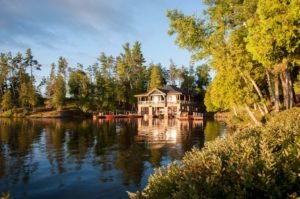
The Point is a member of the elite ranks of the “Adirondack Great Camps.” In the late 19th century, Gilded Age magnates– such as the Vanderbilts and Guggenheims– built idyllic log mansions along the lakeshores of upstate New York as escapes back into nature. The Point, built by a member of the Rockefeller clan, is the paragon of this Great Camps era and continues to offer peace and natural beauty to this day.
During your luxurious stay at The Point, unwind without the distraction of television and with the serenity of the lake and forest at all sides. Twice a week you’ll have the opportunity to dress up in black tie attire and join an elegant seven-course meal, in the glamorous style of the Rockefeller’s Great Camps of old. During the day, participate in as many (or as few!) activities as you choose– from waterskiing, fishing and paddle-boarding on the lake to hiking, tennis or croquet amongst the trees.
1900’s
The Birth of Modern American Art
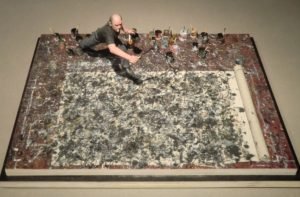
Jackson Pollock working on Alchemy in 1947 Photo: Collection Peggy Guggenheim © The Artist and Cristin Tierney Gallery, New York, NY
During the 20th century, several iconic modern American artists began work that would become deeply embedded in both the national and international imagination. Georgia O’Keefe, known as the “Mother of American modernism,” captured the spirit of the American West with enlarged depictions of flowers and New Mexico landscapes. Jackson Pollock, widely noticed for his distinctive “drip technique,” was the leading force behind the abstract expressionist movement. Mark Rothko is a Latvian-American artist that made an indelible mark on the modern art scene. He was closely identified with the New York school, a circle of painters that emerged during the 1940’s as a new collective voice in American art. His most recognizable works are his deceivingly simple color field paintings.
1929-1939
The CCC Is Created by Roosevelt’s New Deal
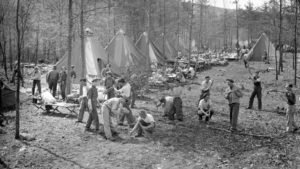
Bettmann Archive
The Great Depression was the worst economic downturn in the history of the industrialized world and affected every aspect of American life in the early 1900’s. Unemployment reached a peak of 25 percent. Civilian Conservation Corps (CCC) was a part of President Franklin Roosevelt’s New Deal, created to provide employment and re-energize America’s broken economy. Over the course of nine years, the CCC employed millions of young men, primarily making valuable contributions to public land development. The work relief program planted more than three billion trees and constructed trails and shelters in more than 800 parks nationwide. To this day, many national parks and public lands sport signs paying homage to the efforts of these young men during the Great Depression. Some of the most notable that the CCC contributed to are Grand Canyon National Park, Zion National Park and Big Bend National Park.
1941-1945
World War II in the U.S.
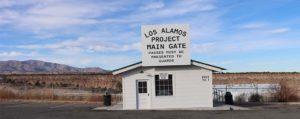
The tremors from World War II were so widely felt across the United States that it’s difficult to narrow down the places most keenly marked by it. In 1942, the U.S. government ordered more than 110,000 Japanese Americans to be detained at Manzanar War Relocation Center, leaving their careers and homes behind. Now a National Historic Site, visitors can visit Manzanar and learn more about the lives of the immigrants and citizens who were held there against their will. Known as the birthplace of the atomic bomb, Los Alamos is probably the most famous federal government laboratory in the U.S. Early in the war, the U.S. government issued the Los Alamos laboratory with a top-secret mission: to end the war via the creation of an atomic bomb. The site was so secret that one mailbox, PO Box 1663, served as the mailing address for the entire town.
1950’s
Mid Century Modern Architecture Is Born

Mid Century modern architecture is instantly recognizable, partly due to a modern resurgence in popularity. Captured in popular TV shows and movies, such as Mad Men or Don’t Worry Darling, the aesthetic is generally assigned as gaining traction in 1933-1965. As always with art and architecture, the movement had roots in the cultural and political moment of the time; in this case, the end of World War II and the demand for modern, suburban homes. Palm Springs, California is something of a time capsule of these mid century modern homes. A cruise around the local neighborhoods, or even a visit to the Tramway Gas Station, reveals a treasure trove of well-preserved architectural gems. The style can be found across the nation as well, from residential architecture such as Los Angeles’ Eames House to Frank Lloyd Wright’s Fallingwater in Pennsylvania.
1973
The First Mushing Team Crosses the Finish Line on the Inaugural Iditarod Trail Race

In the early 1920’s, white settlers flocked to Alaska hoping to strike gold. Arriving by boat in the coastal towns of Seward and Knik, the newcomers had to travel by land to the gold fields. The historic trail they used is today known as the Iditarod Trail. In the winter, their only means of travel was by dog team along the Iditarod. Mushing, or dog sledding, became crucial to the settlement of Alaska, as dog teams transported mail, people and supplies during the winter’s harshest months. However, as the use of the airplanes and snowmobiles became common throughout the mid 1900’s, the Iditarod Trail was a quickly-fading notion of the past by the late 60’s.
Dorothy G. Page, a resident of Wasilla and self-made historian, conceived the idea to host a dog sled race along the historic trail in homage to its key role in the state’s development. The first race was held in 1973 with 22 mushing teams finishing the 1,000 mile competition.
1990
The Infamous Boston Art Heist
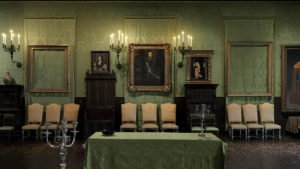
Dutch Room, Isabella Stewart Gardner Museum, Boston. Photo: Sean Dungan
Boston is famous for its Revolutionary War era history. You can visit the site of the Boston Tea Party at Griffin’s Wharf, the Paul Revere House, and America’s first university, Harvard. But did you know that Boston’s more recent history marks it as the site of the world’s largest art heist? In the early morning of March 18, 1990, two thieves disguised as police officers broke into the Isabella Stewart Gardner Museum and stole 13 works of art, valued at over $500 million. The crime remains a mystery, as none of the artwork has been recovered and the thieves are still at large. Visitors to the museum today can still see five empty frames left behind from which the thieves took paintings.
